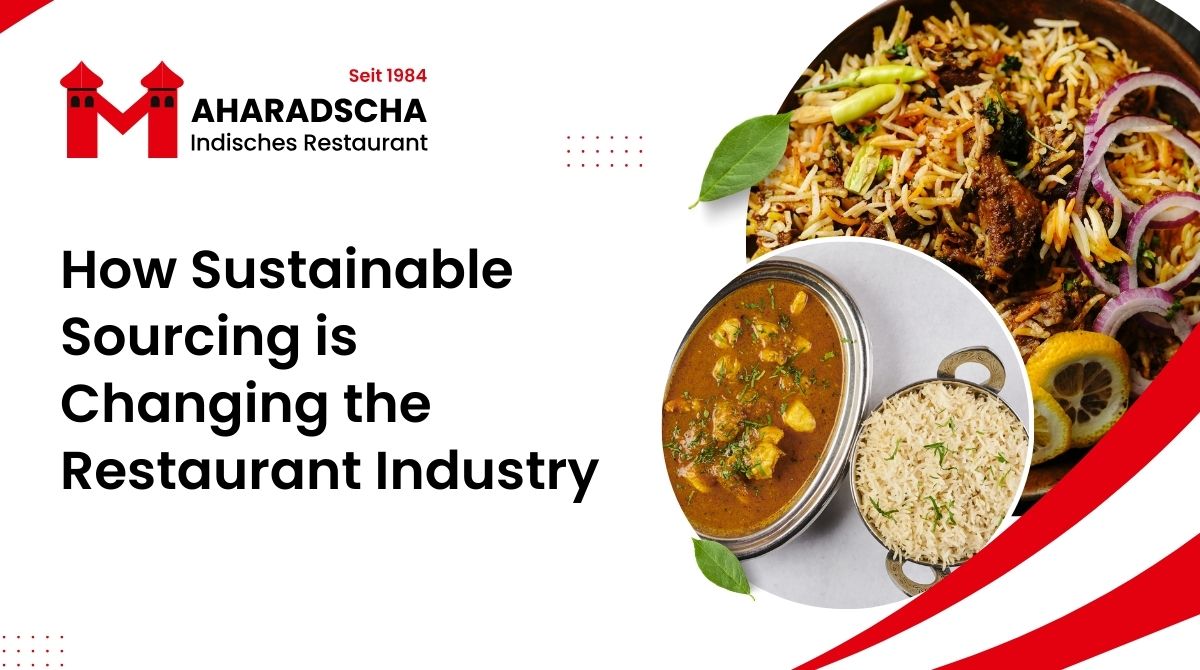In today’s fast-paced world, sustainability is no longer a buzzword—it’s a movement. As consumers become more conscious of their environmental impact, the restaurant industry is evolving to meet these expectations by embracing sustainable sourcing practices. From local farms to responsible fisheries, restaurants are increasingly prioritizing where their ingredients come from and how they are produced. This shift toward sustainability is not only helping the planet but also changing the way restaurants operate and connect with their customers.

What Is Sustainable Sourcing?
Sustainable sourcing refers to obtaining food ingredients in ways that support the environment, promote animal welfare, and positively impact local communities. For restaurants, this means selecting ingredients that are grown or raised using environmentally-friendly practices, such as organic farming, responsible fishing, and ethical livestock management.
Sustainable sourcing can encompass everything from choosing locally grown produce to sourcing meats from farms that prioritize animal welfare, to supporting fisheries that use eco-friendly methods to avoid overfishing. Ultimately, it’s about choosing ingredients that minimize environmental harm and encourage long-term, ethical food production.
The Environmental Benefits of Sustainable Sourcing
One of the most significant impacts of sustainable sourcing is its positive effect on the environment. Restaurants that prioritize locally sourced ingredients are reducing their carbon footprint by cutting down on transportation emissions. Since locally grown food doesn’t have to travel long distances to reach the table, it leaves a smaller environmental impact.
Additionally, sustainable sourcing often supports farming and fishing practices that protect biodiversity and minimize harm to the ecosystem. Organic farming methods, for example, avoid the use of harmful pesticides and fertilizers, which helps preserve soil health and water quality. Likewise, responsible fisheries use techniques that protect marine life, ensuring that fish populations remain stable for future generations.
By embracing sustainable sourcing, restaurants can contribute to a healthier planet by supporting practices that reduce waste, conserve resources, and protect delicate ecosystems.
How Sustainable Sourcing Benefits the Restaurant Industry
The impact of sustainable sourcing extends beyond just the environment; it also influences the way restaurants do business and interact with their customers. Here’s how:
1. Building a Stronger Brand Image
In an era where consumers are increasingly concerned about the environmental and social implications of their purchases, restaurants that embrace sustainable sourcing stand out. A restaurant that promotes eco-friendly practices and responsibly sourced ingredients can build a loyal customer base, particularly among environmentally-conscious diners.
Consumers are becoming more mindful of the food they consume, and many are willing to pay a premium for dishes made with ingredients that align with their values. For restaurants, this provides an opportunity to tap into a growing market of ethical diners who are eager to support businesses that prioritize sustainability.
2. Menu Innovation and Seasonal Offerings
Sustainable sourcing often leads to menu innovation. Since locally-sourced ingredients change with the seasons, chefs are forced to be more creative and develop dishes based on what’s available. This can result in unique and fresh menu offerings that excite customers and offer variety throughout the year.
Incorporating seasonal ingredients can also help reduce food waste, as restaurants are more likely to use ingredients at their peak freshness rather than letting them sit on shelves, unused. This means fresher, higher-quality dishes for customers and a better bottom line for restaurant owners.
3. Improved Ingredient Quality
One of the biggest advantages of sustainable sourcing is the quality of the ingredients. Local, organic, and small-scale producers often use traditional farming methods that yield higher-quality, more flavorful products. For example, sustainably raised meats and vegetables are often fresher and more nutrient-dense than those produced through conventional methods.
Restaurants that choose to source sustainably are investing in ingredients that not only taste better but are often healthier and more ethical, which elevates the overall dining experience.
Economic Considerations of Sustainable Sourcing
While sustainable sourcing can sometimes come with a higher upfront cost, the long-term benefits far outweigh the initial investment. Many restaurants have found that the increase in customer demand for sustainable options justifies the higher cost of sourcing premium ingredients.
1. Supporting Local Economies
One of the key economic benefits of sustainable sourcing is the support it provides to local farmers, artisans, and food producers. By purchasing from local suppliers, restaurants contribute to the local economy and strengthen community ties. This creates a sustainable food system where the entire community benefits, from the farmer who grows the crops to the restaurant that serves the dishes.
2. Building Long-Term Supplier Relationships
Sourcing sustainably also allows restaurants to build long-term relationships with suppliers. By supporting small-scale, local producers, restaurants can ensure they have a consistent supply of quality ingredients, creating a more stable and resilient supply chain.
Overcoming the Challenges of Sustainable Sourcing
Though the benefits are clear, sustainable sourcing does present certain challenges for restaurants. These include:
1. Availability and Consistency
Sustainable ingredients can sometimes be harder to find, particularly for items that aren’t grown or produced locally. Restaurants may struggle to maintain a steady supply of these items, especially in off-seasons or during periods of scarcity. However, this challenge can be mitigated by working closely with local farmers, establishing seasonal menus, and using creative cooking techniques to adapt to what’s available.
2. Cost
Sustainable ingredients can be more expensive than conventionally sourced options. However, many restaurants are finding that the higher costs are justified by the demand from customers who are willing to pay more for ethical and sustainable food choices. Additionally, over time, sustainable sourcing can lead to cost savings by reducing food waste and improving ingredient quality, which can increase customer satisfaction and retention.
3. Transparency in the Supply Chain
It’s important for restaurants to ensure that their sourcing practices are genuinely sustainable. Some producers may claim to use eco-friendly methods when, in fact, their practices are not up to par. This is why restaurants must prioritize transparency in their supply chains, working with trusted suppliers and certifications, such as organic or Fair Trade, to verify the sustainability of their ingredients.
The Role of Technology in Sustainable Sourcing
Technology has played a significant role in making sustainable sourcing more accessible to restaurants. Digital platforms now allow chefs and restaurant owners to connect directly with local farmers, food producers, and sustainable suppliers. These platforms help streamline sourcing processes, improve traceability, and ensure that restaurants are making environmentally conscious decisions. Additionally, technology can assist with inventory management, helping restaurants reduce waste and optimize their use of sustainable ingredients.

Conclusion: The Future of Sustainable Sourcing in the Restaurant Industry
Sustainable sourcing is more than just a trend—it’s the future of the restaurant industry. As consumers demand more transparency and accountability from the businesses they support, restaurants that embrace sustainable practices will be well-positioned to thrive. By sourcing ingredients responsibly, restaurants can improve their environmental footprint, attract conscientious customers, and contribute to a more sustainable food system.
The shift toward sustainable sourcing is an exciting evolution for the restaurant industry, one that will not only benefit the planet but also create new opportunities for innovation, quality, and growth. It’s time for restaurants to embrace sustainability—not just because it’s good for business, but because it’s the right thing to do.


